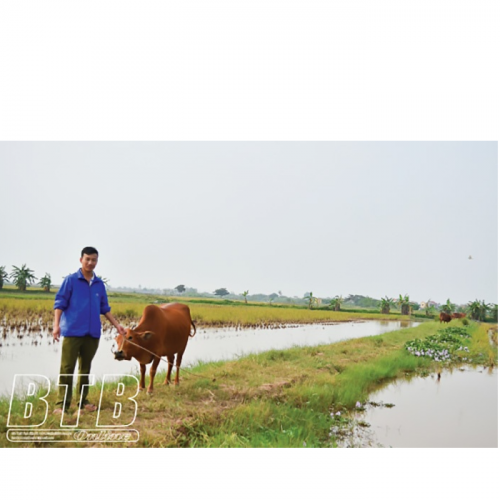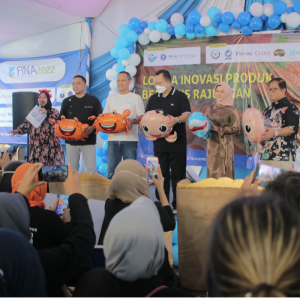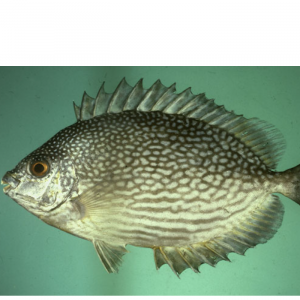
The "Double" Effect from Fish Farming Model in Rice Fields
| Tue, 01 Dec 2020 - 16:17
Rent abandoned fields to cultivate rice, along with making use of the water surface to raise fish and ducks. This combined production model initially brought economic efficiency to Mr. Dang Van Tang, Tu Cuong village, An Cau commune (Quynh Phu).
Looking at Mr. Tang's 13-acre field, at this time, only rice is rotten. Standing far away saw the rice tops shiver as if there were ducks in the field. Closer to observe, there are both ducks and fish racing to "devour" rice.
Also read: Cobia Farming Techniques
Mr. Tang said: About 4 years ago, seeing many people leave their fields deserted, if they had homes, they abandoned their crops. Like my family, if I want to have arable land, I only have 2 rice fields of the mother and daughter. So I decided to rent out the abandoned field to cultivate. When discussing with his mother and wife, they were strongly opposed because they were afraid that they would not succeed. There are people who rent out the fields, but they also hesitate, we have little capital, and the family is anchored, unable to be able to. At that time, I was the Deputy Secretary of the Youth Union of the commune, so the more difficult it became, the more determined it was to make it equal.
So more than 13 acres of improved fields are used for rice and fish farming. Mr. Tang dug embankments to prevent storms, each parcel next to the bank dug deep to keep water for fish farming, while in the middle, it was transplanted rice.
Sharing about choosing models of rice cultivation and fish farming, Mr. Tang said: Studying on the mass media and then participating in science and technology transfer classes, I find this model easy to implement, risky Low risk, short payback period. Just invest in the embankment of the area, the field bank and create a system of canals around the field. The fish-rice model brings a "double" effect because fish and rice have a symbiotic relationship, supporting each other to develop. Fish feed on rice pests, sludge, kill weeds and accumulate fish wastes that are effective as fertilizer, increase humus for rice fields, reduce weeding, and soil work after each harvest. Along with that, rice fields provide straw, insects as food for fish, so it saves a lot of food costs. Besides, the fish will eat the golden snail eggs so the snail cannot grow to harm the rice. In addition, less use of chemicals,
Also read: Researchers Succeed in Fortifying Oysters with Vitamins
Each year, Mr. Tang transplants 2 rice crops and harvests fish once. Because spring is the most productive crop with few pests and diseases, Mr. Tang implements rice as usual. Then stock the fish with rice. After harvesting the rice, the water rises, and the rice fish live together. When cultivating winter rice, he drained water and fish to ditches so that he could land, transplant rice, and when the rice stood still, he raised water for fish to live in the rice fields. When harvesting winter rice, repeat it like spring rice. Thanks to natural farming, the quality of fish meat is safe and delicious. Rice yield from 1.7 to 2 quintals / rod. Safe rice, toned fish, delicious, so it is not enough for traders to buy.
Mr. Tang said: I was only in the early stage of rice-fish production, so the amount of fingerlings dropped on the field was small and there were more ducks and cows to breed in my field. With the natural environment, the crabs in our fields also grow a lot. Each year from this model, he earns 200-300 million VND.
Ms. Nguyen Thi Hoa, Secretary of the Youth Union of An Cau commune, said: Although he no longer works as Deputy Secretary of the Youth Union of the commune, Mr. Tang enthusiastically supports and accompanies the youth in all activities. He is also a shining example of the spirit of overcoming difficulties and creativity in economic development for us to introduce and replicate. Mr. Tang is also a policeman and is trusted by the leaders of the Commune Police and his relatives.






















